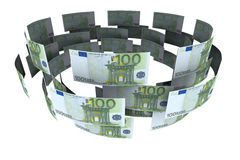Riksbank and Norges Bank Policy Meetings
Between tomorrow and the end of next week, six central banks meet. Sweden's Riksbank and Norway's Norges Bank hold policy meetings tomorrow. Next week is the BOJ, RBA, BOE, and the FOMC.
Of these central banks, the Riksbank is the most likely to adjust policy, and even that is not an odds on favoritescenario. A Bloomberg survey found 26 of 27 do not expect the Riksbank to cut rates but three in ten expect more bond purchases.
The case for easing rests on the underperformance of inflation, despite the negative rates and asset purchases. Headline CPI in September slipped to 0.9% from 1.1% in August, which is a four-year high. The underlying rate, which is not a core rate, but simply uses fixed rate mortgages, slipped to 1.2% from 1.4% and is the lowest in four months.
Although Sweden's growth appears robust, it will not be sustained. Today the debt office tweaked this year's growth forecast to 3.3% from 3.2%. However, next year's growth forecast was cut to 1.9% from 2.2%.
The case against easing is two-fold. First, as the Riksbank wanted, the krona has weakened. On a trade-weighted basis, it has fallen by nearly 5.5% over the past five months. Sweden is a very open economy (exports plus imports equals more than 90% of GDP). That means the depreciation of the krona on a trade-weighted basis has a greaterimpact than on a more closed economy like the US or the eurozone. The depreciation of the krone is tantamount to around 2% easing of monetary conditions. According to the OECD, the krona is now 2.3% over-valued. In April it was nearly 12% over-valued.
Second, Sweden's debt office announced a sharp reduction in of bond issuance next year. In June, it anticipated SEK77 bln (~$8.6 bln) of new issuance. It cut that to SEK66 bln today. The Riksbank is buying SEK45 bln of bonds in H2 16. At the end of the year, it will hold SEK245 bln or around 45% of the total supply. The purchases have already slowed from the initial rounds if QE and given next year's supply, extending its buying again will likely be at a slower pace. No one has called this tapering, but that is what tapering would look like. The Riksbank has another meeting before the end of the year. By holding off a decision until then, it will have the benefit of knowing what the ECB intends.
Last month, Norges Bank indicated that it no longer projects the need to cut rates again. A Bloomberg survey found 28 of 29 expect a stand-pat decision tomorrow. Norway's policy mix is dramatically different than Sweden. Sweden has an easy monetary policy and a tight fiscal policy. Its deficit was 1.7% of GDP in 2014 and fell to 1.1% in 2015. It is being halved this year to around 0.5%, where it is expected in 2017 as well. Norway's is running a diminishing budget surplus and borrowing funds from the petroleum fund.
Norway's headline inflation hit 4.4% in July, the highest since 2008. It has since fallen to 3.6%. The underlying rate, which excluded tax changes and energy, was at 2.9% in September, after spiking to 3.7% in July, the highest since the time series began in 2000.
Since the Norges Bank signaled that policy was on hold, the trade-weighted krone has appreciated by about 3.25%. The OECD estimates that the Norwegian krone is the second most overvalued of the major currencies (behind that Swiss franc) at 15.5%. From 2003 to late-2014, the krone was more than 20% over-valued, according to on the PPP model. In terms ofvaluation, the krone has not been this little over-valued since 2002.
The euro has entered a consolidative phase against the Swedish krona over the past two weeks. The SEK9.76 marked the peak a fortnight ago, while a shelf has been carved ahead of SEK9.68. The euro has been trading broadly sideways against the Norwegian krone this month (~NOK8.90-NOK9.1). The risk is that the euro's consolidation morphs into an outright correction.
![]()
This post was originally published by Marc Chandler at his blog, marctomarket.com
Copyright © Marc Chandler






















